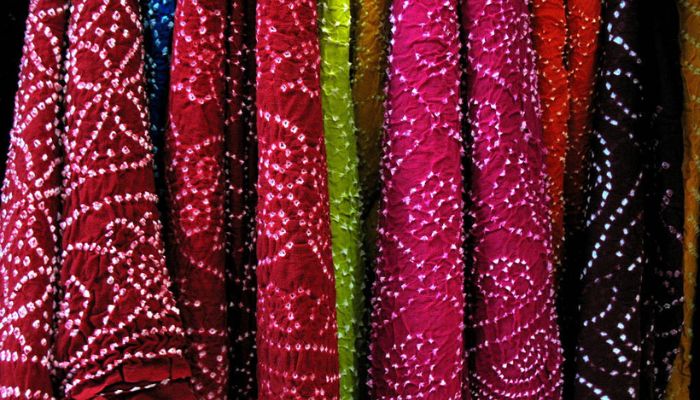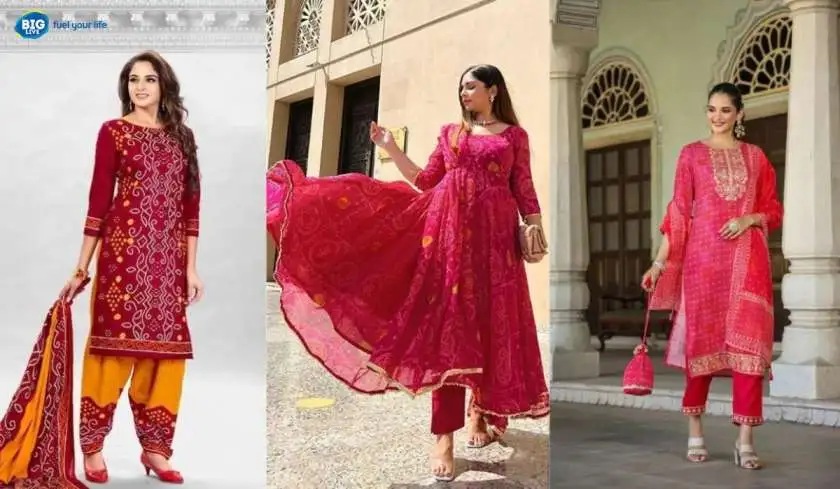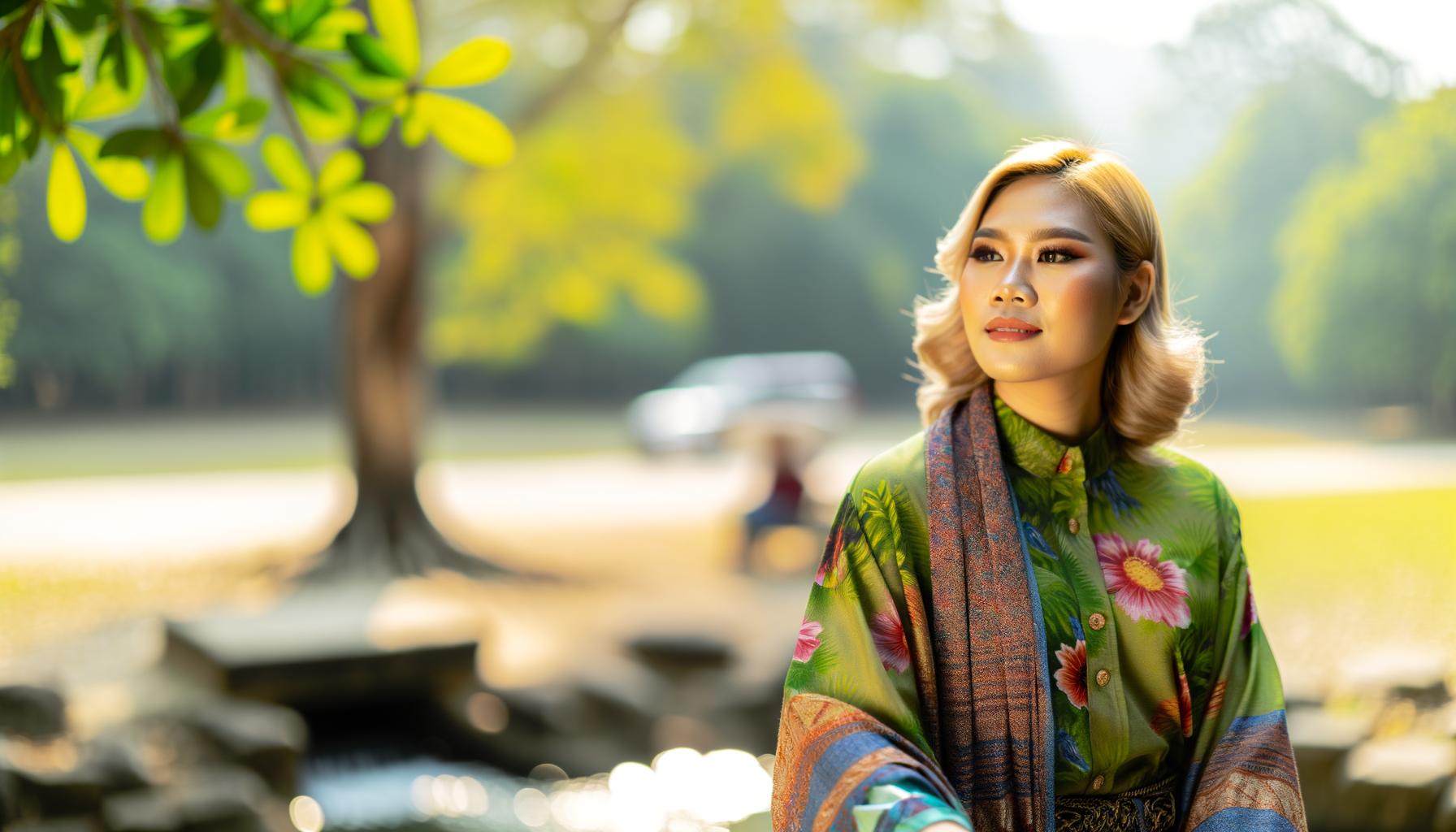If you ever pass a busy road in Gujarat during the festival season or even just an average Sunday, you've probably seen it - beautiful colors, patterned clothes, which feel like a life celebration. That’s Gujarat for you. And when it comes to fashion, the state doesn’t hold back.
But Gujarat’s style isn’t just stuck in tradition. While people still wear Bandhani sarees and Patola dupattas, there’s a whole new wave of clothing that’s starting to define what it means to dress “Gujju-style” today. Think printed jackets over jeans, Bandhani crop tops, or even blazers stitched from centuries-old weaving traditions. Yes, blazers. Let’s walk through how Gujarat is quietly rewriting the rules of Indian fashion — not by erasing the past, but by weaving it into something fresh.
The Tie That Dyes: Bandhani, A Living Art

Bandhani is not only a print. It's a part of the Gujarati blood. This tie-dye approach, wherein tiny elements of fabric are pinched and knotted earlier than being dipped into coloration, creates the ones particular dotted styles anybody acknowledges. Some say no two Bandhani pieces are ever truly the same.
You’ll see:
- Bandhani tops paired with trousers
- Soft Bandhani scarves thrown over plain tees
- Bandhani sneakers (yes, that’s a thing)
- Even laptop sleeves and bucket hats
When Blazers Met Bhuj: The Rise of Fusion Wear
Here’s a surprising scene you might find in Ahmedabad: someone heading into a tech meeting wearing a blazer. Nothing new, right? Except the blazer is made with Ajrakh-printed cotton, or Patola silk lining. This blend of formal structure with ethnic fabric is catching on fast.
People not only buy western styles - they are increased by using traditional weaving and texture. It's not about digging culture for trends, it's about letting both live together.
What’s popular right now?
- Bandhani shirts with linen pants
- Blazers stitched from Mashru silk
- Denim jackets with mirror embroidery patches
- Short kurtas layered under open ethnic coats
What stands out is how natural it all feels. No one’s trying too hard. This is just how people are choosing to dress now.
A State Sewn with Stories: Gujarat’s Textile Treasures
The fabric of Gujarat isn’t just fabric. It’s history. The materials used here have been passed through hands, looms, and generations.
A quick detour into Gujarat’s most iconic textiles:
- Bandhani: As mentioned, this tie-dye magic is bright, emotional, and deeply rooted.
Patola: From Patan, this silk double ikat is expensive, complex, and full of geometric charm. - Mashru: A glossy silk-cotton blend once loved by royals, now found in trousers and jackets.
- Kutch Embroidery: Loaded with mirrors and color, this tribal craft lights up bags, belts, even shoes now.
Each textile has a character. And what’s amazing is how people are using them in new shapes and settings—without removing their soul.
Read more:- College Cool: What Young Keralites Are Wearing in 2025
Designers Who Get It
While fashion houses in Delhi or Mumbai often grab headlines, many of Gujarat’s homegrown designers are doing more meaningful work quietly and consistently. Some are restoring lost patterns. Some are helping local artisans earn fair wages. And some are simply turning grandmother’s closet staples into something runway-ready.
A few who deserve the spotlight:
- Umang Hutheesing – Think royal textiles with minimal, wearable silhouettes
- Tanisha Lal – Brings streetwear edge to age-old fabrics
But beyond names, it’s the mindset that matters: tradition is not something to preserve behind glass. It should be worn, loved, and adapted.
College Streets to Garba Nights

One of the most beautiful parts of this style shift is that it’s not coming top-down. It’s not just designers or celebrities making moves—it’s students, influencers, small shop owners.
Young Gujaratis are showing that ethnic doesn’t have to be formal. That culture can show up on a casual Tuesday. You’ll see:
- Girls wearing Kutch-embroidered vests with wide-leg pants
- Boys matching short kurtas with sneakers and blazers
- Scarves turned into hairbands or DIY crop tops
- Hand-stitched jholas instead of leather purses
The Quiet Hero: Sustainable Fashion, the Gujarati Way
Long before “sustainability” became a global trend, Gujarat was already practicing it. Most artisans here don’t waste fabric. Garments are made to last, and people often pass down clothes like stories.
Also:
- A lot of weaving is still done on handlooms
- Designs are slow-made, not mass-produced
- People care about who made their clothes—not just what brand
- Repairing or altering an outfit is still common
This makes Gujarat not only stylish but thoughtful and earth-friendly.
Not Just Regional: Gujarat’s Influence Goes Far
Scroll through Instagram, and chances are, you’ll find an influencer in Delhi or Bangalore showing off a Bandhani skirt or Ajrakh blouse. The world is catching on. Bollywood stars like Vidya Balan, Sonam Kapoor, and even Priyanka Chopra have worn Patola or replicate-paintings portions on crimson carpets. Gujarat’s look isn’t staying local. It’s becoming global—and proudly so.
A Culture You Can Wear
What Gujarat teaches us is simple: you don’t need to pick between old and new. You don’t have to stop being yourself to fit into fashion. Instead, fashion can fit you—your background, your beliefs, your memories.
And if you can wear all that proudly? That’s not just fashion. That’s identity.
In summary:
- Bandhani is everywhere—from weddings to streetwear
- Blazers and coats are being made from handwoven fabrics
- Traditional textiles like Patola, Ajrakh, and Mashru are trending again
- Designers and youth alike are blending culture with comfort
- Sustainability is already a part of daily life here
Gujarat is inspiring fashion beyond borders













